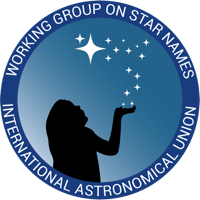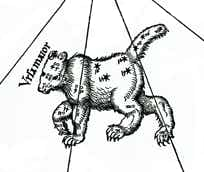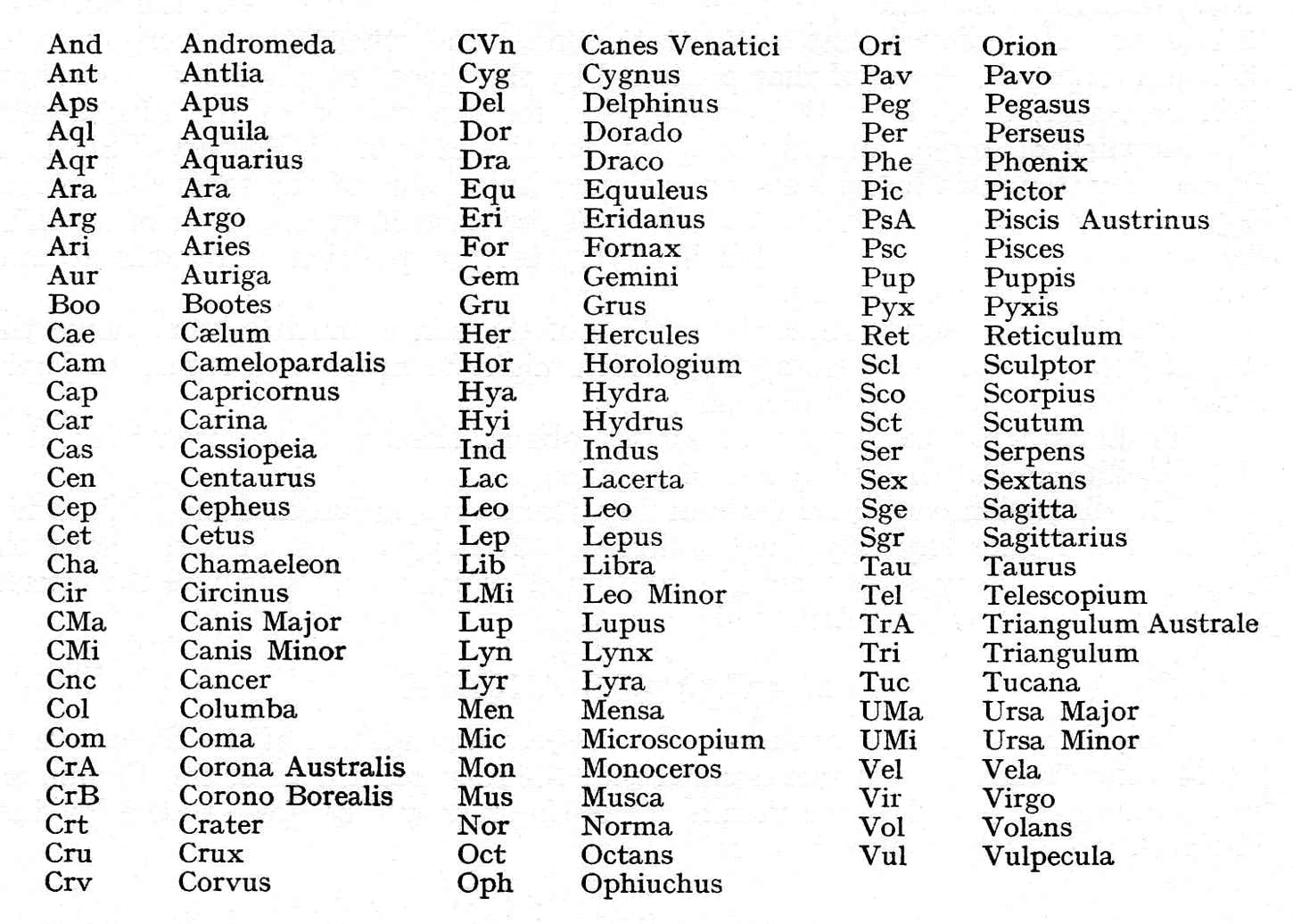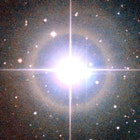ON OTHER PAGES
The IAU list of the 88 constellations and
their abbreviations
BELOW is the original list of constellation names and abbreviations agreed by the International Astronomical Union at its inaugural General Assembly held in Rome in 1922 May, and published in the Transactions of the IAU, vol. 1, p. 158. The IAU Commission on Notations referred to these as ‘the 88 principal constellations’ although there are in fact 89 names here rather than 88; that’s because of the anachronistic inclusion of Argo, the obsolete Greek constellation, in addition to its subdivisions Carina, Puppis, and Vela.
Eagle-eyed readers will spot a typo – ‘Corono’ Borealis should read ‘Corona’. That and Argo aside, this was and still is the authoritative list.
For the background on how these names and abbreviations came to be chosen, see below.
These constellations, though, still did not have officially defined boundaries. That was the next task tackled by the IAU, between 1925 and 1930 – see here.
The origin of the IAU list of constellations
In the 1922 October issue of Popular Astronomy the American astronomer Henry Norris Russell explained how the above list of abbreviations came about:
‘An experimental list prepared by the writer was discussed with other astronomers on the voyage to Europe and at informal after-dinner meetings in Rome. The list, improved by various people, was then tried out on sundry others of different nationality, and appeared to be interpretable almost at first reading. It was then presented, along with Professor Hertzsprung’s, at a meeting of the committee on Units and Notations. A large majority favored the use of three letters, and a set of such symbols was recommended by the Committee and adopted at a plenary session of the International Astronomical Union.’
Russell’s Popular Astronomy article was accompanied by a table in which the IAU’s ‘Corono’ typo was corrected but which introduced two others of its own: ‘CVe’ for CVn and ‘Sae’ for Sge.
The ‘Professor Hertzsprung’ referred to by Russell was the Danish astronomer Ejnar Hertzsprung who had published a list of two-letter abbreviations earlier that same year, analogous to the symbols used for chemical elements. In its report on the 1922 meeting, the IAU Commission on Notations referred to ‘the three-letter abbreviations proposed by Profs Hertzsprung and Russell’, and at the end of his article Russell noted: ‘It should be emphasized that the credit for the suggestion of such symbols belongs entirely to Professor Hertzsprung.’ As a result the system is usually attributed jointly to Hertzsprung and Russell, whose names are of course also joined in the famous Hertzsprung–Russell diagram.
However, in 1922 December Hertzsprung wrote to The Observatory magazine in England specifically disowning the three-letter abbreviations. His letter leaves little doubt that he would have preferred his two-letter scheme to have been adopted. So the three-letter list was Russell’s alone, amended by input from others at the IAU Rome meeting, and Russell’s mention of Hertzsprung’s earlier scheme was a courtesy that was misinterpreted.
Russell did not explain how he settled on these 89 constellations from among the various alternatives in use at the time. However, the names are the same as those to be found in the Revised Harvard Photometry star catalogue published by Harvard College Observatory in 1908 (Annals of the Harvard College Observatory, vol. 50) so it seems that Russell (and Hertzsprung before him) simply adopted those.
Such a step is entirely understandable, as the Harvard catalogue was the standard reference of its day. As explained in the introduction to the Harvard catalogue, its northern constellation names were taken from the atlases and catalogues of the German astronomers F. W. A. Argelander (Uranometria Nova, 1843) and Eduard Heis (Atlas Coelestis Novus, 1872); the southern constellations came from the corresponding works of B. A. Gould (Uranometria Argentina, charts 1877, catalogue 1879), an American astronomer who was director of the Argentine National Observatory in Córdoba.



